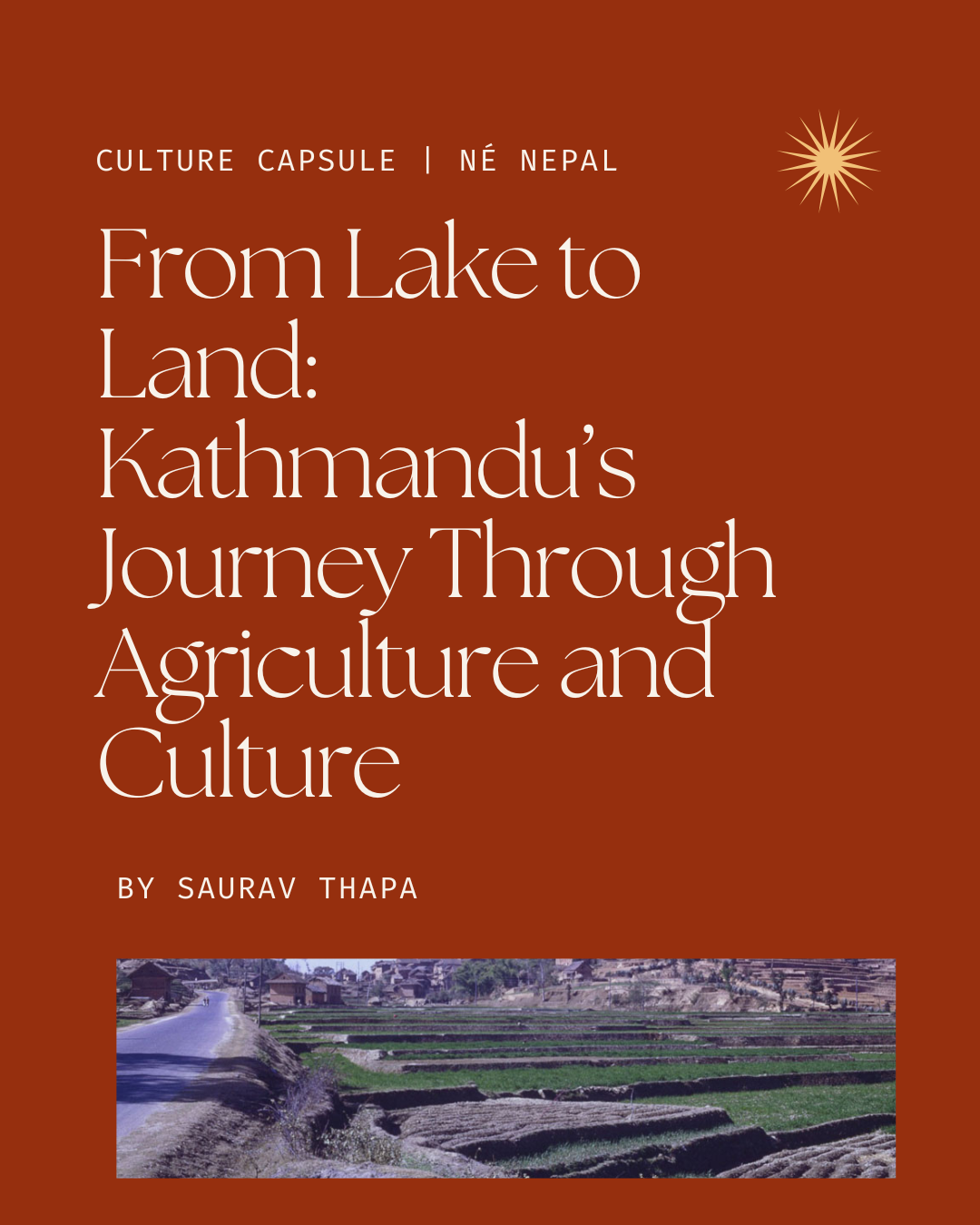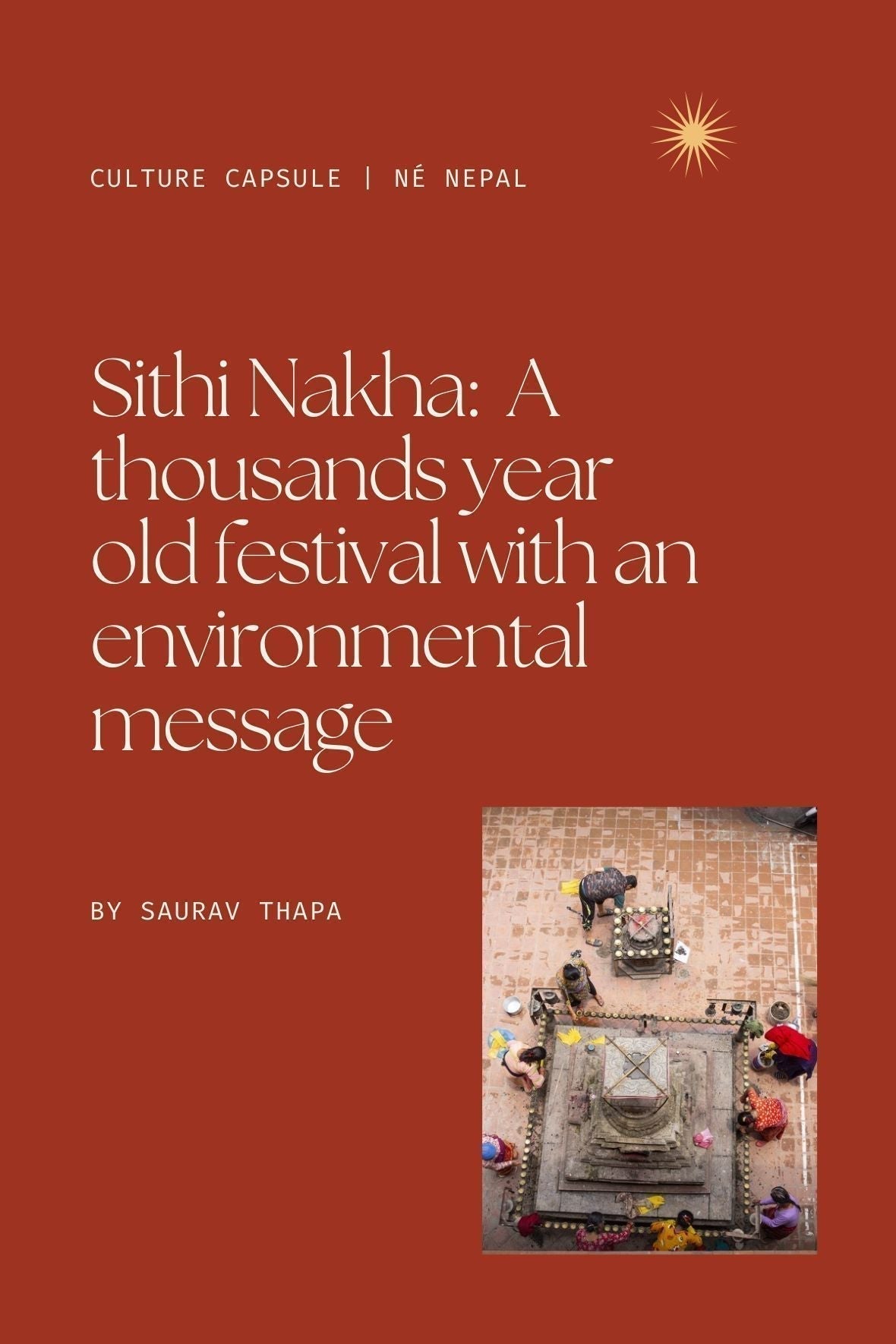Nepal– Kathmandu’s Story of Its Agricultural Roots
Long before today's Kathmandu, the life of its people was rooted in farming. For centuries, agriculture was the primary means of sustenance and livelihood for those living in Swoniga, the Kathmandu valley. This bowl-shaped valley, surrounded by lush hills, has long been known for its fertile land.

The valley has many stories to tell. A folklore says it was once a vast lake until the Bodhisattva Manjushri, wielding her celestial sword, sliced through the hill at Chovar to drain the water. Her emergence brought life to Swayambhunath, where she is still worshipped as a deity to this day. Interestingly, Kathmandu's city settlement is planned in the shape of a sword, symbolising the eight mother goddesses (Astamatrikas) who protect the city. Another tale recounts the story of the 'Vasuki Naga', who once resided in the valley during an era of lake-filled abundance.
The term ‘Nepal’ referred solely to the Kathmandu Valley before the modern-day Nepal was formed. The valley is the centre of farmers and artisans who craft wood, bronze, brass, pottery, and have a diverse cultural heritage.
Kathmandu's fertility carries a twofold meaning - one in terms of its soil, which nourishes crops, and the other in its culture, which nourishes the people. Its agricultural abundance, coupled with the trade nexus along the ancient route connecting Tibet and India, allowed for significant prosperity. The Kasthamandap stands at the centre of these trade routes and became a hub around which the local bazaar revolves. This prosperity attracted numerous rulers who sought to rule the city. The boom of festivals and rituals mirrors in the agricultural calendar.

The Newa civilisation, indigenous to the valley, is primarily a farming community. Their cultural practices are closely tied to the farming cycle. When the monsoon starts, the fields come to life, and the valley bursts into celebration.
-
Gatha: Muga Charhe (Jul) marks the beginning of the festive season. It is celebrated to ward off negative energies and malevolent spirits. For agrarian communities, this festival symbolises a safe and prosperous season ahead.
-
Naagpanchami (Jul/Aug) is dedicated to the worship of 'Naagraaj', the serpent deity. Snakes are believed to reside in water sources and underground, and are revered as guardians against water disasters.
-
Saparu [Gaijatra] (Aug) is a procession where families mourn the deceased of their beloved ones who passed away during the year. Cows are considered sacred and symbolic guides to the afterlife, leading the way to heaven for the souls of the deceased.
-
Yenya Punhi [Indrajatra] (August/September) is one of the biggest festivals that celebrate the end of the monsoon and the arrival of the seasonal shift, preparing the land for harvest. The festival honours Indra, the god of rain, expressing gratitude for rainfall vital to agriculture.
-
Mohani Nakha [Dashain] (September/October) is a time to worship the new harvest after the post-monsoon period. Families gather to pay homage to ancestral deities and share feasts.
-
Swonti Nakha [Tihar] (October/November) celebrates prosperity and abundance. Households honour deities of wealth, as well as animals like crows, dogs, and cows, for their roles in daily life, and siblings through rituals of protection and care. Farmers sell their leftover harvests after securing reserves for their own use.
-
Yomari Punhi (November/December) celebrates the harvest with the making of Yomari, a delicacy made from freshly milled rice flour and sweet fillings, enjoyed as a source of warmth during the onset of winter.
-
Sithi Nakha (May/June) brings the agricultural cycle full circle. People clean wells, ponds, and water sources to ensure purity and readiness for the upcoming planting season. This festival fosters environmental care and community responsibility for shared resources.
These festivals highlight the importance of community engagement, cultural expression and spiritual devotion during times of leisure. Farmers plant their seeds, hope for a good harvest and honour the gods overseeing their crops. These practices become traditions and evolve into festivals and rituals.

Historically, Kathmandu has sustained various dynasties, including the Gopala, Mahisapala, Kirant, Lichchavi, Malla, and Shah. Each era has contributed to its architectural majesty and cultural identity. The settlement patterns established during these times were practical and well-planned, featuring spaces such as dabu (raised platforms) for ritualistic dances, tantric performances and festive processions. Larger gatherings unfold in open squares, known as chowks, transforming the city into a lively theatre during festivals. The balance of prosperity and divine devotion has anchored this civilisation rooted in agriculture while simultaneously fostering celebration.
Né Nepal is inspired by the French ‘né’ (born), giving authentic and handcrafted goods born in the Kathmandu Valley, where artisans create products that represent Nepal’s identity.
The transition from farmers to seasonal traders significantly boosted the valley's economy. Trade routes set up during the late Licchavi era helped the Licchavis and Mallas facilitate the city's art and architecture. In the Malla period, a division of occupational identities was created comprising farmers, traders, masons, artisans, and others, expanding beyond farming into a realm of production and innovation.

By the end of the Malla era, the city had developed a rich architectural heritage, well-organised settlements, and a thriving arts and crafts, which laid a solid socio-cultural foundation. Later, the modern state of Nepal was formed by a unification campaign led by Prithvi Narayan Shah, the king of Gorkha. He then designated the valley as the capital and instilled a sense of unified national identity. During the Rana period and later democratic transitions, farmland was converted into valuable assets for those who constructed palaces, buildings, and other infrastructure, facilitating growth during their respective eras.
Today, the remains of Kathmandu, from lake to farmland to a concrete city, are evident. Although the fields may be fewer and lifestyles have changed, the traditions rooted in agriculture still live on. The festivals continue to be an integral part of the heritage that is connected to the land and the people who have shaped Kathmandu's story.



